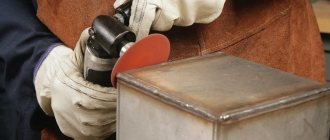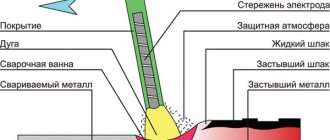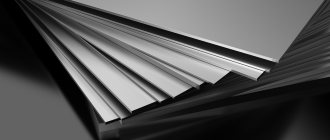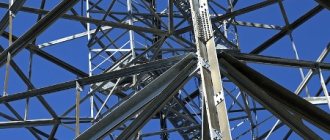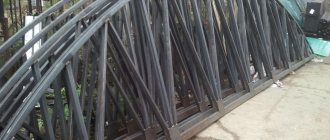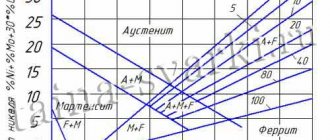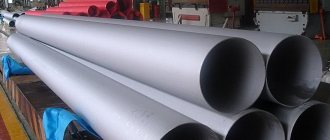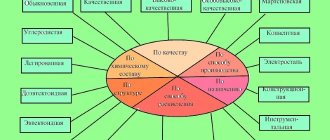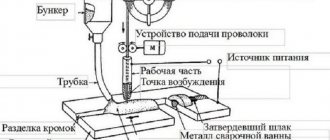About the safety cage. Nuances when welding 30KhGSA. — DRIVE2
At the end of the review text about 30KhGSA, I would like to point out some features of welding 30KhGSA steel in an optimal way. First of all, experts advise that before starting the 30KhGSA welding itself, preheat the materials from 30KhGSA to 250-300 degrees Celsius, and after welding carry out slow cooling. This is very important, since 30KhGSA steel is sensitive to sudden cooling during welding - as a result, cracks may appear. Therefore, after finishing welding chromansil, you should withdraw the torch slowly, while heating the metal around the welding site at a distance of approximately 20-40 mm. Also, no later than 8 hours after welding 30KhGSA, you need to subject the welded units to hardening and high tempering - hardening 30KhGSA is carried out with heating to 880 degrees Celsius, and subsequently the product from 30ХГСА is cooled in oil at a temperature of 20 to 50 degrees. Tempering is carried out by heating a product from 30KhGSA to 400-600 degrees and further cooling it in hot water. The 30KhGSA welding itself must be carried out quickly, without holding the torch flame in one place, in order to avoid burnout of alloying additives.
taken from here: www.smcspb.ru/home/7
www.drive2.ru
Physical properties
The main characteristics and application of steel 35 depend on the chemical composition.
The density of the metal decreases with increasing temperature. In the range from 20 to 800 degrees it changes from 7826 to 7600 kg/m3. At the same time, the ductility of steel increases. The density indicator is necessary when calculating the load on load-bearing structural elements.
With increasing temperature, other physical properties of the material also change:
- electrical resistivity – from 251 to 1156*109 Ohm*m at 900 degrees;
- specific heat capacity – 469-699 J/kg*deg;
- linear expansion coefficient – from 12 to 13.9 1/deg;
- the thermal conductivity coefficient decreases from 49 to 28 W/m*deg;
- The modulus of elasticity also decreases in the range of 20-400 degrees from 2.06*10-5 to 1.68*10-5 MPa.
Mechanical parameters
The hardness of the alloy is 163 MPa. The indicator can be increased using heat treatment. Most often, the normalization mode is used for this purpose, which normalizes the metal structure and increases surface hardness.
Welding steel 30 HGSA
Welding steel 30 KhGSA
Greetings to everyone. Above is the steel I am welding using electric arc welding with conventional electrodes? so that the seam does not burst?
Welding steel 30 HGSA I welded it semi-automatically. They say it's some kind of aircraft steel. Welding steel 30 HGSA demantoid, and what additive was used. with the regular one?
Post edited by Evgenii: 07 October 2021 — 20:00
Welding steel 30 HGSA
Evgenii, ordinary wire for a semi-automatic machine. I made axle shafts with a diameter of 45mm, then cooked pancakes for them under the UAZ disk. It turned out fine, I first tried it on bushings made of this steel - they hold.
Welding steel 30 HGSA
demantoid, got it thanks
Welding steel 30 HGSA
Needs annealing. Then, if necessary, hardening. When using an unannealed seam, cracks are possible. I worked with such seams for 20 years.
Welding steel 30 HGSA pfegor, the shaft body for the pendulum saw is made of this steel, you need to screw it onto the channel!
pfegor, how to do annealing?
Post edited by Evgenii: 07 October 2021 — 20:21
Welding steel 30 HGSA Well, I don’t know... Three years ago the drum of the chipping machine was repaired. We welded a strip of 30xgs semi-automatically with regular wire without any maintenance. The drum works 8-9 hours a day all year round - nothing has cracked there. And the vibration and loads there are not small. This is purely from practice.
Post edited by maris_grosbergs: 07 October 2021 — 20:27
Welding steel 30 HGSA
maris_grosbergs, so I’m thinking of welding it at home using arc welding with conventional electrodes
Welding steel 30 HGSA
Evgenii (07 October 2021 — 20:23) wrote:
pfegor, the shaft housing for the pendulum saw is made of this steel, you need to screw it onto the channel!
Most of the seams passed through X-ray and almost 100% through a magnetic flaw detector. Cracks and pores are the main defects that were eliminated by welding with argon. Maybe nothing will happen to your design. Additive, electrodes are needed with a low carbon content. Welding steel 30 HGSA
heat the housing to 200 degrees, the electrodes are 13\55, and do not allow it to cool quickly.
Welding steel 30 KhGSA Electrodes NIAT-3. After welding, anneal the part (or simply heat the weld area with a cutter), then heat treatment (hardening). Without annealing, cracks in the welding areas are possible due to metal stress. With uv. Welding steel 30 HGSA
Welded critical parts using argon-arc welding. After maintenance, it is necessary (Vacation and not annealing!) Next, it is advisable to go through shot blasting. After hardening, the surface of the part is greatly strengthened.
www.chipmaker.ru
Electrodes for welding steel 20yuch
The group of grades of electrodes for welding alloy steels is much less numerous compared to the group of electrodes for welding carbon and low-alloy steels. This is mainly explained by the fact that of all types of coatings for alloyed electrodes, only coatings of the basic type or, in rare cases, of the rutile-basic type are used. In addition, the development of an alloyed electrode that provides a set of operational and welding-technological properties is almost always a complex engineering task, the solution of which requires large material and time costs.
The most important characteristics of a group of electrodes for welding alloy steels: chemical composition of the deposited metal; strength and viscoplastic properties of the weld metal, as well as special properties of the weld metal or joint. These indicators should be used when choosing the brand of electrodes for welding a specific alloy steel object.
The group of electrodes for welding alloy steels combines standardized GOST 9467-75 five types of electrodes for welding structural steels of increased and high strength: E70, E85, E100, E125, E150; nine types of electrodes for welding alloy heat-resistant steels: E-09M, E-09MH, E-09H1M, E-05H2M, E-09H2M1, E-09H1MF, E-10H1M1NFB, E-10HZM1BF, E-10H5MF; a number of grades of electrodes contained in OST 108.948.01-86; electrodes according to individual specifications.
The chemical composition of the metal of welds made with electrodes of types E70 ... E150 is not standardized by GOST 9467-75 and may not be given in the regulatory and technical documentation for electrodes, with the exception of sulfur and phosphorus, the content of which should not exceed 0.030 and 0.035%, respectively. However, the technical documentation for electrodes corresponding to the specified types always contains data on the chemical composition of the deposited metal, which most often is an acceptance characteristic of the electrodes. If such data is not included in the acceptance characteristics, but is given as a reference (typical chemical composition of the deposited metal), they must be taken into account when choosing the brand of electrode for welding a particular alloy steel object.
Welds at nuclear power facilities must have increased reliability. Therefore, only certain brands of electrodes that have passed special certification tests can be used for these purposes. In accordance with the document “Basic provisions for welding and surfacing of components and structures of nuclear power plants, experimental and research nuclear reactors and installations” OP 1513-72, the following grades of electrodes are allowed to be used for welding alloy steels: TsU-2KhM, TsL-20, TsL-21 , TsL-38, TsL-45, TsL-48, PT-30, RT-45A, RT-45AA.
Electrode coatings of the main type provide the highest viscoplastic properties due to the lowest content of hydrogen, sulfide and oxide inclusions in the deposited metal compared to coatings of other types. This is the first of the main reasons why basic coatings are used for electrodes intended for welding alloy steels.
The second reason for using low-hydrogen coatings of the main type when welding alloy steels prone to cold cracking is the negative influence of hydrogen in the heat-affected zone of the products being welded. Atomic hydrogen diffuses from the weld metal into the heat-affected zone, where it is released into microvoids and pores existing in the base metal, formed from the fusion of dislocations that move under the influence of welding stresses. When released into voids, atomic hydrogen is converted into molecular hydrogen, as a result of which a pressure of the order of 105 MPa develops, and tensile stresses of the second kind arise in the surrounding volumes of the metal. Adsorption of hydrogen on the surface or at the tip of the formed microcrack is also possible. As a result of the development of these phenomena, the strength of the metal decreases and the likelihood of cold cracks in the heat-affected zone of the base metal increases.
Electrodes type E70. ANP-2 electrodes are intended for welding steels 14Kh2GMR, 14Kh2GM-SSh, 14KhMNDFR, 14KhGNMD; the deposited metal is alloyed with nickel, chromium, and molybdenum. VSF-75U electrodes are intended for welding pipes and other critical structures made of alloy steels with a temporary resistance of 640-690 MPa. The deposited metal is alloyed with molybdenum and vanadium. K-5NMH electrodes are intended for welding alloy steels with a yield strength of 590-790 MPa, for example 14Kh2GMR. The weld metal is alloyed with nickel, chromium and molybdenum. LKZ-70 electrodes are designed for welding high-strength carbon and alloy steels (up to 690 MPa). The deposited metal is alloyed with chromium. Welding can only be done in the down position. VSF-85 electrodes are intended for welding fixed joints of thermally strengthened pipes made of alloy structural steels with a temporary resistance of 690-710 MPa. The metal is alloyed with nickel, chromium and molybdenum.
NIAT-3M electrodes are intended for welding steel grades 30KhGSA, 30KhGSNA, 25KhGSA, 20KhGSA, 12Kh2NVFA, etc. The deposited metal is alloyed with chromium and molybdenum. UONI-13/85 electrodes are intended for welding alloy steels with a temporary resistance of 690-980 MPa. The weld metal is alloyed with molybdenum. UONI-13/85U electrodes are intended for welding steels 35GS, 25G2S, 30KhG2S, etc. Welding is carried out using both direct and alternating current; the deposited metal is alloyed with molybdenum.
Electrodes N-20/Sv-12Kh2NMA-VI are intended for welding steels VNL-3M, 30KhGSA and their combinations in the lower and vertical positions. The weld metal is alloyed with nickel, chromium and molybdenum. OZSh-1 electrodes are designed for welding alloy steels with a temporary resistance of up to 1080 MPa. Electrodes N-17/EP331, N-17/EP331U are intended for welding cast steels 27KhGSNML, 35KhGSL and their combinations with steels 30KhGSNA, 35KhGA in the lower and vertical positions. The weld metal is alloyed with nickel, chromium, molybdenum and tungsten. Electrodes N-17/EP331-VI, N-17/EPZZ1U-VI are intended for welding cast steels 27KhGSNML, 35KhGSL and their combinations with wrought steels 30KhGSNA and 30KhGSA in the lower and vertical positions. The weld metal is alloyed with nickel, chromium, molybdenum and tungsten.
OZS-11 electrodes are intended for welding steels 12МХ, 15ХМ, 12ХМФ, 15Х1М1Ф and the like, operating at temperatures up to 510 °C, both on direct and alternating current. The weld metal is alloyed with chromium and molybdenum. TML-1U electrodes are intended for welding steam pipelines made of steels 12МХ, 15ХМ, 12Х1МФ, 15Х1М1Ф, 20ХМФЛ, operating at temperatures up to 540 °С, and heating surface elements made of steel grades 12Х1МФ, 12Х2МФСС and 12Х2МФБ. The weld metal is alloyed with chromium and molybdenum. TML-4V electrodes are intended for repairing defects in cast housing parts of turbines and steam fittings made of steels 20ХМЛ, 20ХМФЛ, 15Х1М1ФЛ, 12МХЛ, operating at temperatures up to 565 °С without subsequent heat treatment of the repaired areas. The weld metal is alloyed with chromium and molybdenum. TsU-2ХМ electrodes are intended for welding power equipment made of steels 15ХМ, 20ХМ, 20ХМЛ, operating at temperatures not exceeding 540 °С. The weld metal is alloyed with chromium and molybdenum.
TML-ZU electrodes are intended for welding steam pipelines made of steels 12Kh1MF, 15Kh1M1F, 20KhMFL, 15Kh1M1FL, operating at a temperature not exceeding 570 °C, and heating surface elements made of steel grades 12Kh1MF, 12Kh2MFB and 12Kh2MFSR, as well as for welding defects in elements made of the same steels The weld metal is alloyed with chromium, molybdenum and vanadium. TsL-20 electrodes are intended for welding steels 12Х1М1Ф, 15Х1М1Ф, 20ХМФЛ, 15Х1М1ФЛ and similar, operating at a temperature not exceeding 565 °С, as well as for welding casting defects. The weld metal is alloyed with chromium, molybdenum and vanadium. TsL-17 electrodes are intended for welding steel grades 15Kh5M, 12Kh5MA and 15Kh5MFA, operating in aggressive environments at temperatures not exceeding 450 °C. The weld metal is alloyed with chromium, molybdenum and vanadium.
PT-30 electrodes are intended for welding power equipment made of 10GN2MFAA steel, operating at a temperature not exceeding 350 °C. The weld metal is alloyed with manganese, nickel and molybdenum. Electrodes RT-45A and RT-45AA are intended for welding power equipment made of steels 15Х2НМФА and 15Х2НМФАA, operated at temperatures not exceeding 350 °С. The weld metal is alloyed with manganese, chromium, nickel and molybdenum. TsL-21 electrodes are intended for welding power equipment made of steel grade 16GNMA and similar, operating at temperatures not exceeding 400 °C. The weld metal is alloyed with manganese, nickel and molybdenum. TsL-38 electrodes are intended for welding power equipment made of steels 12ХМ, 12МХ, 15ХМ, 12Х1МФ, operated at a temperature not exceeding 585 °С. The weld metal is alloyed with chromium and molybdenum.
TsL-45 electrodes are intended for welding power equipment made of steels 12Х1МФ, 15Х1МФ and similar, operating at a temperature not exceeding 565 °C. The weld metal is alloyed with chromium, molybdenum and vanadium. TsL-48 electrodes are intended for welding power equipment made of 16GNMA steel and other manganese-nickel-molybdenum steels operated at temperatures not exceeding 400 °C. The weld metal is alloyed with nickel, molybdenum and vanadium.
TsL-57 electrodes are intended for welding power equipment made of steel 10Х9МФБ and similar ones, operating at a temperature not exceeding 350 °C. The weld metal is alloyed with chromium, molybdenum and vanadium. TsL-59 electrodes are intended for welding power equipment made of 10GN2MFA steel, subjected to normalization or hardening and tempering, operating at a temperature not exceeding 350 °C. The weld metal is alloyed with nickel and molybdenum.
Technical characteristics of steel 30KhGSA, features and application
This grade of steel belongs to the “structural alloy” category. Initially, 30xgsa steel was intended for aircraft construction, but due to its excellent characteristics it has found wider application. It also has another name (based on the chemical additive elements it contains) - “chromansil” (chrome + manganese + silicon).
Product range
- Pipes.
- Forged blanks and forgings.
- Strip iron.
- Sheets are thick and thin.
- Rolled products – long products, shaped products.
- The rods are calibrated and ground.
Designation
The first position is a number. Characterizes the percentage of carbon (in hundredths, therefore 0.3%). In accordance with the accepted classification, this steel is classified as medium alloy.
The second is letters. Correspond to the names of alloying additives. The absence of numbers after this group indicates that their content in steel is no more than 1%.
The third position is the letter (in this case “A”). Means that this brand is considered high quality.
What do supplements provide?
Their content in 30KhGSA steel is in the range of 0.8 – 1.1%.
- Chrome – anti-corrosion resistance and mechanical strength.
- Manganese – increases wear resistance and resistance to shock loads.
- Silicon – increases the viscosity (impact) value.
Features of 30HGSA
- Hardening of this grade is carried out in the temperature range of 550 – 650 °C. Heat treatment makes it possible to increase the strength of the material (up to 2,800 MPa) and ductility.
- Weldability is good. However, the quality of the weld will be ensured only if a number of conditions are met: preliminary heating of the metal (up to 300 ºС), and after completion of work, slow cooling of the area (for this, the burner flame is gradually retracted to the side). If this is not done, there is a risk of cracks appearing in the weld.
- Low cost, since alloying components are not in short supply.
As a disadvantage of this product, experts note its insignificant “hardenability” (2.5 - 4 cm), as well as some sensitivity to fragility.
Application
- Welded structures.
- Frame coverings, solid bodies.
- Fastening elements.
- Fan blades.
- Axles, levers, shafts and much more.
There are more than enough varieties of products made from this metal, so listing all GOSTs that regulate the specifications/conditions for certain samples will take up a lot of space. It is enough to note the following documents: Nos. 4543, 2591 – 1971; 11268, 11269, 103 – 1976; 14955 – 1977; 10702 – 1978 and a number of others. Examples of analogues of this steel include products 25 (35) KhGSA, 40 FKhA (KhN) and 35 KhM.
Price
The price of 1 kg of sheet products is from 50 rubles (retail). “Wholesale” will cost about 5 rubles/kg cheaper.
ismith.ru
Welding structural steel
Structural steel is used much more often than tool steel. Everything is made from it: from small parts to factory machines. It is this category that includes welding of 40x steel, 30xgsa steel, 35xgsa steel and other other grades.
What is structural steel? This is a very interesting metal in composition. It consists of various impurities, in particular phosphorus and sulfur. The more of these components there are in the composition, the more unreliable the steel will be, so you need to monitor this indicator. Structural steel can be ordinary, high-quality, high-quality and especially high-quality.
As you understand, the latter type of structural steel contains a minimum of impurities, due to which it is possible to obtain truly high-quality and durable metal. Well, ordinary structural steel contains the most impurities; it is considered the most short-lived. By the way, this classification also has separate subgroups (they differ in the presence of some additional chemical components). But we will not describe the classification in detail so as not to confuse you.
It is precisely because of the possible fragility of structural steel that products are most often made from it that will not be subjected to serious mechanical loads during operation. Now let's move on to the topic of how welding of structural steel products is performed, for example, welding of steel pipes.
First you need to calcinate the workpiece in the oven. This way you will achieve greater ductility of the metal and eliminate its excessive stress. As in the previous case, we recommend using an inverter and coated electrodes. For our purposes, UONI 13/55 brand rods are perfect. They can be easily found in any store, they are inexpensive and with their help it is even possible to weld steel pipelines, not to mention smaller products.
Welding technology for low-alloy steels (part 1)
Most often, using electroslag welding, structures are made from low-alloy steels of grades 30KhGSA, 15KhMA, 16GNM and 09G2DT (steel M).
Electroslag welding of steel 30KhGSA, unlike conventional submerged arc welding, does not cause any particular difficulties. The weld metal made by electroslag welding, despite the increased content of carbon and silicon in this steel, is resistant to the formation of cracks.
When electroslag welding of 30KhGSA steel, the formation of hardening structures in the heat-affected zone, which contribute to the formation of cracks, is eliminated. The hardness of 30KhGSA steel in the heat-affected zone does not exceed 300 HB.
Until now, structures made of 30KhGSA steel with a thickness of 30 and 70 mm have been manufactured using electroslag welding. Such steel is welded with one or two fixed (their axis is fixed) electrode wires with a diameter of 3 mm. In this case, the welding mode given in table is applied. 98.
Table 98. Mode of electroslag welding of steel 30KhGSA with a thickness of 30 and 70 mm.
| Metal thickness, mm | Number of electrodes, pcs. | Current, A | Welding voltage, V | Slag bath depth, mm | “Dry” electrode stickout, mm | Gap between welded edges, mm |
| 30 | 1 | 475—550 | 36—38 | 35—45 | 35—40 | 20—22 |
| 70 | 2 | 400—450 | 34—36 | 40—45 | 35—40 | 20—22 |
Welding is performed with electrode wire Sv-10GSMT or Sv-18KhMA (GOST 2246) under flux AN-22 or AN-8M. The specified mode and welding materials ensure the production of a high-quality welded joint with the required mechanical properties of the weld metal and heat-affected zone.
After heat treatment of the welded joint, consisting of quenching in oil at a temperature of 880–910°C and subsequent tempering at a temperature of 510–550°C, the mechanical properties of the weld metal and heat-affected zone are not inferior to the mechanical properties of the metal being welded (Table 99).
www.prosvarky.ru
Selecting mode parameters
Welding is carried out with direct current of reverse polarity, preferably in an environment of inert gases. It is advisable to choose welding wires similar in chemical composition to the base metal.
The welding mode must be observed so that the seam cools as quickly as possible.
Welding of high-alloy corrosion-resistant steels is possible in CO2, gas mixtures: Ar+CO2; Ar+O2. To obtain high-quality seams, wires with a high content of titanium and aluminum are used, for example: Sv-07Х18Н9ТУ, Sv-08Х20Н9С2БТУ
Approximate welding modes for steel type 18-8 in inert gases
| Type of connection | Size, mm | Gas | Welding current, A | Arc voltage, V | Electrode diameter, mm | Electrode extension, mm | Gas consumption, l/min | ||
| S | b | k | |||||||
| 1,5-2 | 0+0,5 | 2-3 | Ar | 60-90 70-130 | 19-20 18-21 | 0,8 1-1,2 | 8-12 8-12 | 10-12 10-12 | |
| 3-4 | 0+0,5 | 3-4 | Ar | 90-170 130-190 | 19-22 20-23 | 0,8-1 1,2-1,6 | 12-16 12-16 | 12-18 12-18 | |
| 5-8 | 0+0,5 | 4-6 | Ar Ar Not | 160-300 230-300 160-300 | 20-25 22-26 24-30 | 1,2-1,6 1,6-2 1-1,6 | 16-20 16-20 10-16 | 18-20 18-20 40-60 | |
| 12-25 | 0+1 | — | Ar Ar Not | 280-400 350-550 280 450 | 22-26 25-28 30-40 | 1,6-2 3-4 1,6-2 | 16-30 25-40 16-30 | 30-40 40-45 60-80 | |
Approximate welding conditions for high-alloy steels in carbon dioxide
| Compound | Size, mm | Welding current, A | Arc voltage, V | Electrode diameter, mm | Electrode extension, mm | Gas consumption, l/min | |
| S | b | ||||||
| 1 1,5 2 3 | 0 0 0,5 0,5 | 25-60 35-80 45-100 70-120 | 16-17 16-17 16-18 18-20 | 0,5 0,5-0,6 0,6-0,8 0,8-1,2 | 6-8 6-8 6-10 8-10 | 5 5-6 6-8 7-9 | |
| 4,5 6 8 | 0,5 1 1 | 110-180 150-260 170-280 | 20-24 26-30 26-30 | 1,2-1,6 1,6-2 1,6-2 | 10-12 12-14 12-14 | 8-14 14-18 14-18 | |
| 10 | 1,5 | 240-400 | 27-34 | 2 | 12-18 | 16-24 | |
